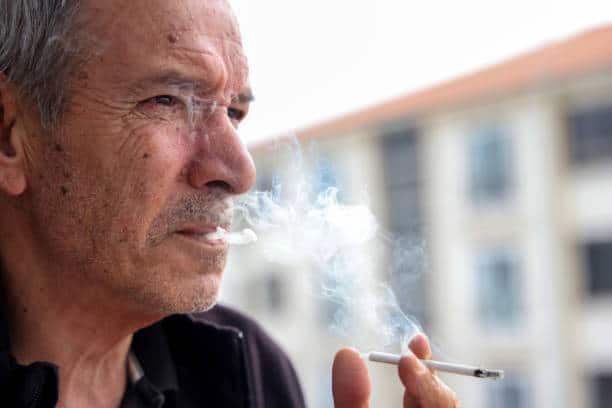Introduction: The Relationship Between Smoking and Skin Health
Does smoking cause spots? Smoking is well understood to be dangerous for the health, including such severe diseases as respiratory tract illnesses and cardiovascular diseases. But when close to the skin, it is unpleasant to see the effects of smoking on skins, yet it attracts less attention than on other organs. Some have asked whether or not smoking can cause acne, skin spots, and such like issues. In this article, the methods through which smoking affects skin, reviewing scholarly research, and pipeline to smoking skin effects to achieve improved skin health can be discovered.
1. The Effects of Smoking on Skin Health
Skin is among the largest organs of the human body and an organism shield against exogenous factors. Smoking brings a combination of toxic substances, which not only influence internal organs but also have a negative impact on skin. Here are some direct ways smoking affects the skin:
- Reduced Blood Flow: When people smoke, the blood vessels that provide blood supply to skin cells narrow, cutting off nutrients and oxygen. This reduced blood flow is what causes skin cells to become oxygen starved and nutrient deprived leading to skin that looks lackluster and grainy.
- Toxin Accumulation: The compounds of cigarette smoke consist of about thousands of chemicals including nicotine, carbon monoxide, tar and many others; all these compounds can settle in the body and cause skin cell oxidation.
- Collagen Breakdown: Inability to produce adequate collagen and elastin fibers and smoking leads to fast degradation of collagen which is responsible for skin elasticity thus the early signs of aging such as wrinkles.
2. How Smoking Leads to Skin Spots and Pigmentation
Hyperpigmentation, or skin spots, have diverse causes, and smoking is emerging as one of the causes of skin pigmentation. Here’s how it happens:
- Increased Melanin Production: A few works indicate smoking may encourage melanogenesis particularly in dark skin individuals because melanin pigments the skin’s layers. Rising levels of melanin may cause more pigmentation spots to develop meaning that the incidence of the same will rise.
- Delayed Healing and Inflammation: Smoking hampers the capacity of the skin’s cells to regenerate themselves and this makes the PIH worse. If you have acne or any scars on the skin you know that smoking could diminish the skin’s ability to heal and could lead to discoloration of the skin.
- Sun Sensitivity: Smoking can make the skin more susceptible to sunlight and further, the UV leads to worsening of skin pigmentation.
3. Does Smoking Cause Acne?
Smoking seems to be an essential cause of acne, but the evidence varies with poor studies done on different subjects. While smoking may not directly cause traditional acne (clogged pores from oil and dead skin cells), it is linked to other types of acne and blemishes:
- Comedonal Acne: Smoking has been clearly linked to development of non-inflammatory acne also known as comedonal acne. This kind of skin problem involves black and white comedones and not red, swollen bumps.
- Oxidative Stress and Free Radicals: It must however be noted that smoking has adverse effects on the skin since smoke production creates free radicals which are potentially hazardous to the skin since they affect sebum production as well as damaging cells of the skin. These changes can lead to formation of conditions that result in experiences such as clogged pores.
- Dehydration and Excess Sebum: This is because smoking dries the skin and in order for the skin to keep producing oil, it has got to produce more oil. This is a skin condition that results from overproduction of the skin’s natural oil sebum that together with the dead skin cells may block the skin pore to cause acne.
4. The Science Behind Smoking and Skin Aging
Aging of skin is a normal body process, but the skins aging can be caused by smoking. This is because smoking weakens the collagen and elastin structures that give the skin its firmness and elasticity.
- Collagen and Elastin Breakdown: Smoking degrades collagen and elastin products within the skin layers resulting in early creation of wrinkles, skin flapping, and reduced elasticity.
- Free Radicals and Skin Aging: Smoking harms skin cells and DNA which make one have bad skin since smoking makes fine lines, wrinkles and spots appear quickly.
- Lip Wrinkles and Crow’s Feet: Some of the other signs include lines around the lips and eyes that are as a result of contraction of the skin muscles due to smoking and collagen breakdown in the regions.
5. Smoking and Overall Skin Tone
Tobacco has an impact on the skin in several ways as it causes skin to blur due to poor blood circulation making the skin cheeks and sallow. Here’s how smoking can lead to blotchy or uneven skin tones:
- Reduced Oxygen Flow: The tissue cells obtain inadequate oxygen supply, which consequently results in rosiness of the skin and uneven complexion.
- Yellowish or Grayish Tint: Usually, patients who smoke for a long time, will see that their skin has turned yellow or gray because toxins accumulate in the skin and affects the color of skin cells.
- Delayed Skin Renewal: Smoking again slows down the rate of cellular turnover so that dead skin cells remain at the surface give a lifeless, blotchy complexion.
6. Tips to Prevent and Reverse Skin Damage from Smoking
While quitting smoking is the most effective way to prevent further skin damage, certain skin care practices and lifestyle habits can help mitigate the damage:
- Hydrate Regularly: The skin becomes dry from smoking and can also be fought by hydrating the skin. These secrets mentioned above include using a good moisturizer and drinking water.
- Use Antioxidant-Rich Products: Cosmetics containing antioxidants such as Vitamin C, Vitamin E, and niacinamide will further reduce free radicals and repair the skin.
- Sun Protection: Smoking worsens skin’s response to UV and can lead to more pigmentation and collagen production, so use sunscreen daily.
- Exfoliate Gently: Deep cleaning process can also help to eliminate the dead skin cells from the skin’s surface, thereby promoting the outlook of a youthful skin.
- Increase Collagen Production: Smoking negatively impacts the collagen levels in the skin but applying collagen boosting products or eating foods high in collagen will restore the skin’s collagen.
- Consider Dermatology Treatments: Chemical peels, laser treatment and derma rolling for instance enhance skin pigmentation, collagen production and skin mechanical properties.
Conclusion
It goes without saying that smoking greatly affects skin in terms of aging, as well as pigmentation and dullness. Even though they have no conclusive evidence that describe smoking as having a direct correlation with inflammatory acne, it has closely related effects such as clogging of pores and other acne related effects coming as outcomes of oxidative stress, skin dehydration and cell damage. In case you’re worried about how smoking impacts on skin, there are steps to minimize it or eliminate it while proper care will enhance the texture of the skin.




